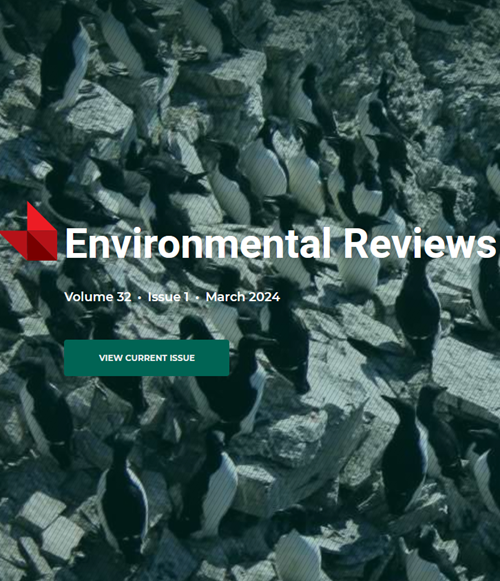Sulfolane in contaminated sites: environmental toxicity and bioremediation technologies
IF 5.1
3区 环境科学与生态学
Q2 ENVIRONMENTAL SCIENCES
引用次数: 2
Abstract
Sulfolane is widely used around the world as an industrial solvent for purifying sour natural gas. However, because of accidental spillage and improper on-site storage/disposal procedures, reports of groundwater, aquifer, and soil contaminations have raised concerns about its potential impacts on humans and the ecosystem. As a contaminant of emerging concern, there is a lack of information on the human toxicity of sulfolane. Several bioremediation technologies have been conducted to assess the biodegradation potential of sulfolane in contaminated groundwater and soils. This review presents and discusses the available literature on the toxicity of sulfolane, which could be useful for developing proper sulfolane guidelines in different media. The oral LD50 of sulfolane varies from 0.6 to 3.5 g·(kg body mass)–1 for different mammalian species, including guinea pig, mouse, rabbit, and rat. In addition, we also review the various sulfolane bioremediation studies to date, highlighting the efficacy of aerobic versus anaerobic bioremediation of sulfolane at contaminated sites. The zero-order biodegradation rate of sulfolane varies from 0.033 to 190 mg·L–1·day–1 depending on the initial concentration of sulfolane, nutrients, oxygen levels, temperature, and other parameters. Effective aerobic treatment technologies can lead to the complete mineralization of sulfolane with sulfuric acid as its major end by-product. Furthermore, the application of aerobic granulation as a promising biotechnology for sulfolane biodegradation is also discussed. This review further discusses the significance of utilizing sulfolane-degrading bacteria to reduce treatment times and presents information for future researchers and scientists on the specific isolates recorded.污染场地中的环己烷:环境毒性和生物修复技术
环己烷作为一种工业溶剂被广泛应用于含硫天然气的净化。然而,由于意外泄漏和不当的现场储存/处置程序,地下水、含水层和土壤污染的报告引起了人们对其对人类和生态系统的潜在影响的关注。作为一种日益受到关注的污染物,目前缺乏关于环己烷对人体毒性的信息。几种生物修复技术已被用于评估受污染地下水和土壤中亚砜的生物降解潜力。本文综述并讨论了现有的有关亚砜的毒性的文献,为制定不同介质中亚砜的使用指南提供参考。不同哺乳动物(豚鼠、小鼠、家兔和大鼠)口服亚砜的LD50在0.6 ~ 3.5 g·(kg体重)-1之间。此外,我们还回顾了迄今为止各种环砜生物修复研究,重点介绍了环砜在污染场所的好氧与厌氧生物修复的效果。亚砜的零级生物降解率在0.033 ~ 190 mg·L-1·day-1之间,取决于亚砜的初始浓度、营养物质、氧气水平、温度等参数。有效的好氧处理技术可以实现以硫酸为主要副产物的环己烷的完全矿化。此外,还讨论了好氧造粒法作为一种很有前途的生物技术在亚砜生物降解中的应用。本文进一步讨论了利用亚砜降解菌减少处理时间的意义,并为未来的研究人员和科学家提供了有关所记录的特定分离株的信息。
本文章由计算机程序翻译,如有差异,请以英文原文为准。
求助全文
约1分钟内获得全文
求助全文
来源期刊

Environmental Reviews
环境科学-环境科学
自引率
3.50%
发文量
45
期刊介绍:
Published since 1993, Environmental Reviews is a quarterly journal that presents authoritative literature reviews on a wide range of environmental science and associated environmental studies topics, with emphasis on the effects on and response of both natural and manmade ecosystems to anthropogenic stress. The authorship and scope are international, with critical literature reviews submitted and invited on such topics as sustainability, water supply management, climate change, harvesting impacts, acid rain, pesticide use, lake acidification, air and marine pollution, oil and gas development, biological control, food chain biomagnification, rehabilitation of polluted aquatic systems, erosion, forestry, bio-indicators of environmental stress, conservation of biodiversity, and many other environmental issues.
 求助内容:
求助内容: 应助结果提醒方式:
应助结果提醒方式:


